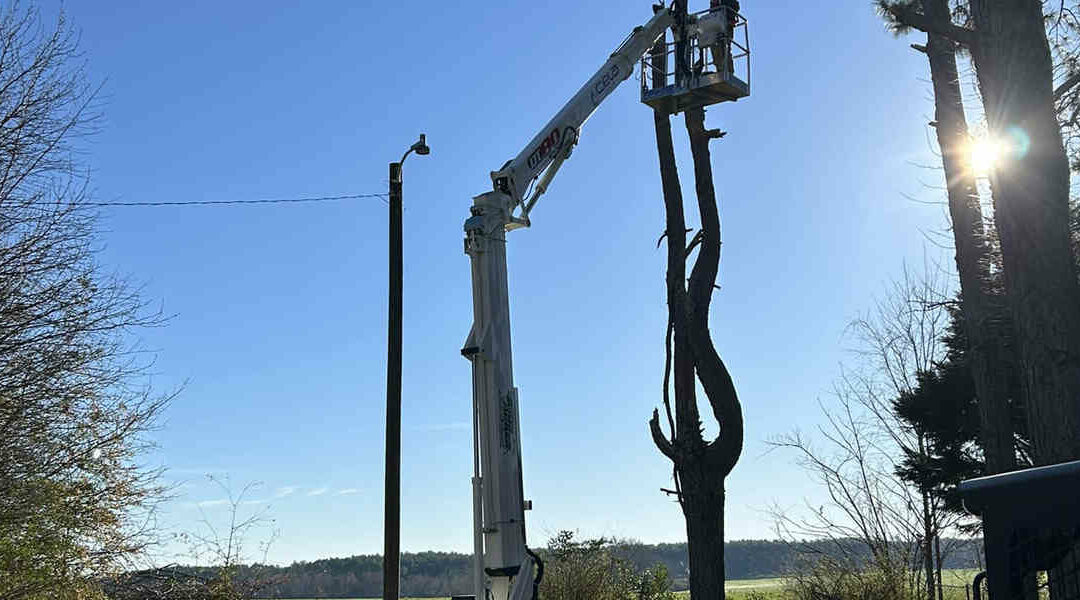You should never ignore a curved tree in your yard. It can be disastrous down the road. So, why are curved trees dangerous?
In this blog post, Putney‘s superior tree service specialist delves deeper into the causes and dangers of leaning trees and what you should do about them. Keep reading for information.
What Are the Causes of Curved Trees?
Various factors can lead to your trees growing with a lean, and they include:
- Poor soil conditions. Soil compaction, erosion, and water saturation can lead to weak roots and compromise your tree’s structural integrity. Eventually, the tree will lean to one side.
- Natural growth. Trees usually grow at an angle in search of sunlight. This is especially true in densely wooded areas.
- Root damage. Landscape activities, construction projects, or heavy equipment can damage your tree’s roots. This can compromise its stability and cause it to lean.
- Adverse weather events. Putney is prone to storms, tornadoes, and other extreme weather events that can irreversibly alter your young trees’ growth patterns.
Top Five Signs That a Curved Tree Is Dangerous
Ask any experienced arborist: Why are curved trees dangerous? They’ll likely tell you it depends on these key factors:
- Degree of lean: You should worry about your tree’s stability if you notice a sudden or significant change in its angle of the lean.
- Irreversible damage: Suppose your tree exhibits considerable structural damage or extensive root decay. Maybe it’s leaning beyond a safe angle. It can fall over at any time, and you should remove it before that happens.
- Tree health: If your curved tree shows signs of decay, disease, or pest infestations, the chances are that it’ll fall.
- Proximity to structures: Trees leaning precariously toward buildings, utility lines, walkways, or public spaces pose a high risk of falling, causing property damage and injuries.
- Soil and root condition: Have you noticed soil cracking or root lifting around the tree’s base? This is a surefire sign that the tree’s anchorage in the soil has weakened and may soon topple over.
Can You Save a Curved Tree?
To determine whether or not you can save a leaning tree, you need to assess various parameters like its age, condition, and the reason for leaning. If it’s a young tree with a slight lean, staking or guy wires can help guide it to a more upright position.
Pruning can ease the weight from a tree’s leaning side. This can help rebalance the canopy and make the tree more stable.
What if you’re dealing with a larger, more mature tree? A professional arborist may recommend a more sophisticated remedy to stabilize the tree without jeopardizing its health.
Reach Out to Green Acres Tree Service for Professional Assistance
Why are curved trees dangerous? Can you move a tree on your property? If you need more information on such questions, Green Acres Tree Service is your trusted arborist in Putney, GA.
Call us at (229) 881-2538 to schedule a personalized consultation and receive a free estimate.


